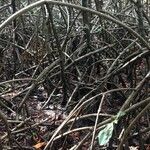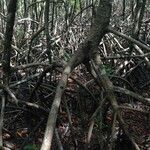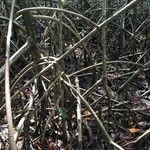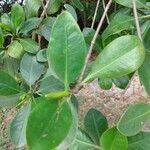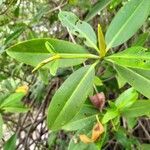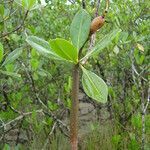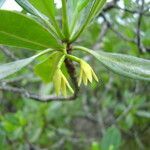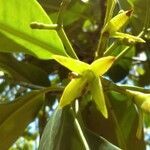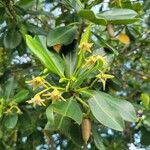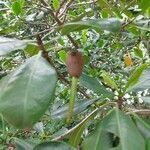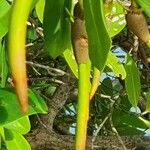Trees to 25 m. tall. Leaves obovate or elliptic, the apex obtuse, the base cune-ate, slightly decurrent on the petiole, 7-15 cm. long, 2.0-8.5 cm. broad, glabrous, coriaceous; petiole 1.0-2.5 cm. long. Inflorescence once-dichotomous and 2-flowered, rarely trichotomous and 3-flowered; peduncles 1.5-3.5 cm. long; pedicels 0.5-2.0 cm. long; bracteoles truncate-trapezoid. Floral buds ampullaceous, broad-est at the base, acuminate at the tip; sepals 11-15 mm. long, 4 mm. wide; petals involute, 9-11 mm. long, 2.0-2.5 mm. wide; stamens 8, 5.5-7.0 mm. long; ovary bilocular, half-inferior, the conical upper half terminating in a bifid style, the length of ovary from base of disc to tip of stigma 5-7 mm. Fruit 1.9-2.6 cm. long, 1.0-1.3 cm. wide, the protruding seedling up to 40 cm. long.
An evergreen tree. The crown is thick, round and bushy. There are many tangling aerial roots. The bark is reddish-brown. The leaves are simple and opposite. They are shiny and dark green. They are narrowly oval and leathery. The flowers are white to pale yellow. They have 4 petals. The flowers occur in clusters. The fruit are dark rusty brown. They are egg shaped. The fruit has a starchy interior which is eaten.
Shrub or small tree, to 15 ft. high
